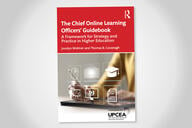You have /5 articles left.
Sign up for a free account or log in.
Anyone who doubts that rising tuition is making students especially thrifty when it comes to the ancillary costs of going to college might consider Johns Hopkins University, where nearly 200 students are protesting a new fee that works out to about the price of two movie tickets and some Chinese carry-out.
The fee is for classroom clickers -- a popular technology that allows professors to gauge student understanding or opinion in real time by giving them handheld voting devices and taking polls throughout a class period. Johns Hopkins began piloting the system six years ago, and since then it has subsidized the cost of the per-student “enrollment codes” in hopes of “focus[ing] the pilot on education, rather than on administrative issues,” according to Candice Dalrymple, director of the university’s Center for Learning Resources.
Now that the pilot has expanded into a broad deployment, affecting about half of the university’s 5,000 undergraduates, the front office is passing those fees on to students. Students can pay $13 per course, per semester to register their clicker, or they can pay a one-time fee of $35 that covers all courses, all semesters. All students taking courses that use clickers are required to buy the enrollment codes. (Students are also required to buy the actual clicker devices, which run between $20 and $30, but this had been true during the pilot phase.)
Given that students spend hundreds of dollars every year on textbooks, it might have seemed unlikely that students would raise a fuss about a new $35 charge covering clickers until graduation. The vendor, eInstruction, says it is “definitely not the norm” for a university to keep paying the enrollment fees for students once the system has been deployed at scale.
But some students were offended by the idea that they should pick up the bill. Naturally, a Facebook page devoted to their dissatisfaction was not far behind.
“This semester, our tuition has increased, BUT we still have to pay for this,” wrote Katherine Weiling Tan, a sophomore, in a manifesto on the Facebook “event" she created to organize her peers against the new fees. “We do NOT want to pay $35 for enrollment codes, which should have been free in the first place." Tan dubbed the event, “Don’t pay for CPS enrollment codes!” Soon, 187 people had agreed to “attend”; another 79 said "maybe."
Several students wrote on the event’s wall. “I don’t mind it, but I'll see what the [student government] can do,” wrote Mike Wu, another sophomore.
Others were more forceful: “It’s a useless service anyway,” wrote Adam Zeldin. “It doesn’t better my education. Yet, I had to buy the device, the school has to buy its devices, etc. Such a waste of money.”
But the university thinks clickers add considerable value to the education of its students. Richard Shingle, a lecturer in biology, has tracked the effects of clickers on student performance in his general biology courses. What Shingle has found is that since he has started using clickers, he has seen class attendance go up about 30 percent -- and grades along with it.
“It goes two ways,” says Dalrymple: based on the real-time feedback, “faculty know how quickly they can move forward on certain concepts. And the students benefit because they don’t have classes that go too fast or too slow.”
Tan says she has not seen any benefit on the student side. “Most students who go to the professor after class don't ask questions about the material, but rather complain about how their clicker didn't work,” she told Inside Higher Ed in a Facebook message. “I just don’t see why some staff and faculty think it is useful.”
Student pushback against clickers is nothing new, according to Derek Bruff, the assistant director of Vanderbilt University’s Center for Teaching, who literally wrote the book on clickers. “It is common to hear students complain about clickers if they are used in ways that do not provide clear learning benefits to the students,” Bruff told Inside Higher Ed in an interview last year.
Often, student buy-in depends on how their professors are using the devices, Bruff said.
“If an instructor uses clickers only to take attendance or give quizzes, students often object to paying for a device just to make the instructor’s job a little easier,” he said. “If, however, an instructor uses the results of a clicker quiz to review the quiz with the students immediately after they take it, focusing on questions most missed by students and exploring popular incorrect answers, students see this as adding value to their learning experience and are more likely to see the clickers as useful.”
Tan originally created the Facebook group as a way to organize a letter-writing campaign, but turnover in the dean’s office has held up that process. In any case, it seems unlikely the group’s efforts will carry the day: while 187 students did join Tan’s Facebook protest, 262 ignored the invitation to join, and another 256 specifically declined.
For the latest technology news from Inside Higher Ed, follow IHEtech on Twitter.




